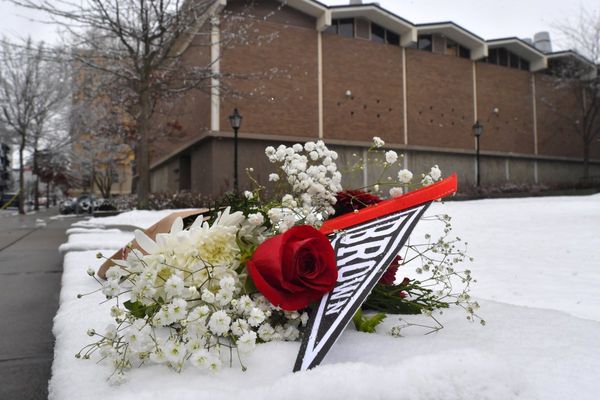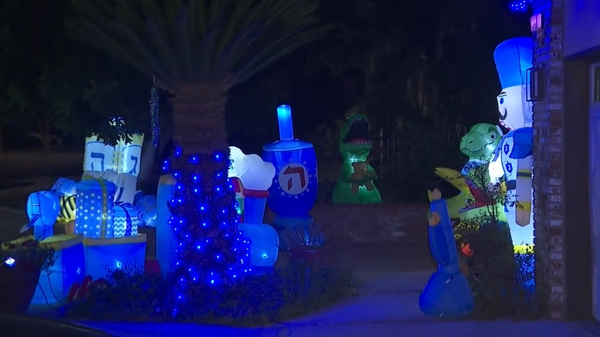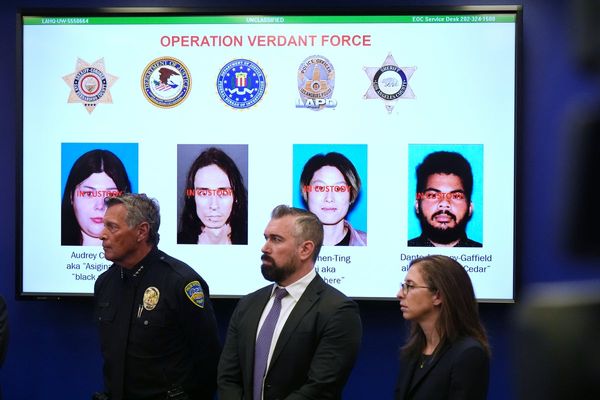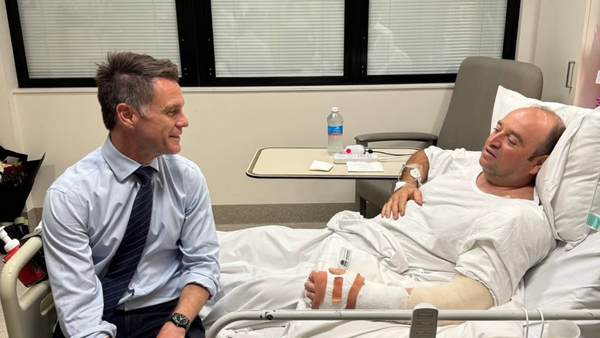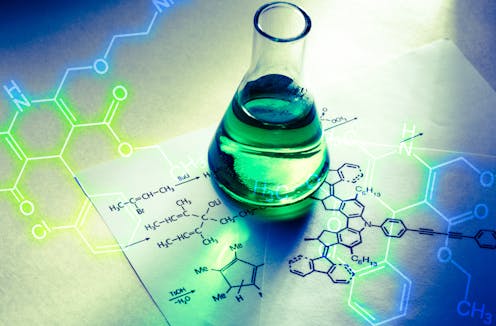
The universe is flooded with billions of chemicals, each a tiny pinprick of potential. And we’ve only identified 1% of them. Scientists believe undiscovered chemical compounds could help remove greenhouse gases, or trigger a medical breakthrough much like penicillin did.
But let’s just get this out there first: it’s not that chemists aren’t curious. Since Russian chemist Dmitri Mendeleev invented the periodic table of elements in 1869, which is basically a chemist’s box of Lego, scientists have been discovering the chemicals that helped define the modern world. We needed nuclear fusion (firing atoms at each other at the speed of light) to make the last handful of elements. Element 117, tennessine, was synthesised in 2010 in this way.
But to understand the full scale of the chemical universe, you need to understand chemical compounds too. Some occur naturally – water, of course, is made of hydrogen and oxygen. Others, such as nylon, were discovered in lab experiments and are manufactured in factories.
Elements are made of one type of atom, and atoms are made of even tinier particles including electrons and protons. All chemical compounds are made of two or more atoms. Although it’s possible there are undiscovered elements left to find, it’s unlikely. So, how many chemical compounds can we make with the 118 different sorts of element Lego blocks we currently know?
Big numbers
We can start by making all the two-atom compounds. There are lots of these: N2 (nitrogen) and O2 (oxygen) together make up 99% of our air. It would probably take a chemist about a year to make one compound and there are 6,903 two-atom compounds in theory. So that’s a village of chemists working a year just to make every possible two-atom compound.
There about 1.6 million three-atom compounds like H₂0 (water) and C0₂ (carbon dioxide), which is the population of Birmingham and Edinburgh combined. Once we reach four- and five-atom compounds, we would need everyone on Earth to make three compounds each. And to make all these chemical compounds, we’d also need to recycle all the materials in the universe several times over.
But this is a simplification, of course. Things such as the structure of a compound and its stability can make it more complex and difficult to make.
The biggest chemical compound that has been made so far was made in 2009 and has nearly 3 million atoms. We’re not sure what it does yet, but similar compounds are used to protect cancer drugs in the body until they get to the right place.
But wait, chemistry has rules!
Surely not all those compounds are possible?
It’s true there are rules – but they are kind of bendy, which creates more possibilities for chemical compounds.
Even the solitary “noble gases” (including neon, argon and xenon and helium), which tend to not bind with anything, sometimes form compounds. Argon hydride, ArH+ does not exist naturally on Earth but has been found in space. Scientists have been able to make synthetic versions in laboratories that replicate deep space conditions. So, if you include extreme environments in your calculations, the number of possible compounds increases.
Carbon normally likes being attached to between one and four other atoms, but very occasionally, for short periods of time, five is possible. Imagine a bus with a maximum capacity of four. The bus is at the stop, and people are getting on and off; while people are moving, briefly, you can have more than four people actually on the bus.
Read more: Confessions of a chemist: I make molecules that shouldn't exist
Some chemists spend their entire careers trying to make compounds that, according to the chemistry rulebook, shouldn’t exist. Sometimes they are successful.
Another question scientists have to grapple with is whether the compound they want can only exist in space or extreme environments – think of the immense heat and pressure found at hydrothermal vents, which are like geysers but on the ocean floor.
How scientists search for new compounds
Often the answer is to search for compounds that are related to ones that are already known. There are two main ways to do this. One is taking a known compound and changing it a bit – by adding, deleting or swapping some atoms. Another is taking a known chemical reaction and using new starting materials. This is when the method of creation is the same but the products may be quite different. Both of these methods are ways of searching for known unknowns.
Coming back to Lego, it’s like making a house, then a slightly different house, or buying new bricks and adding a second storey. A lot of chemists spend their careers exploring one of these chemical houses.
But how would we search for truly new chemistry – that is, unknown unknowns?
One way chemists learn about new compounds is to look at the natural world. Penicillin was found this way in 1928, when Alexander Fleming observed that mould in his petri dishes prevented the growth of bacteria.
Over a decade later, in 1939, Howard Florey worked out how to grow penicillin in useful amounts, still using mould. But it took even longer, until 1945, for Dorothy Crowfoot Hodgkin to identify penicillin’s chemical structure.
That’s important because part of penicillin’s structure contains atoms arranged in a square, which is an unusual chemical arrangement that few chemists would guess, and is difficult to make. Understanding penicillin’s structure meant we knew what it looked like and could search for its chemical cousins. If you’re allergic to penicillin and have needed an alternative antibiotic, you have Crowfoot Hodgkin to thank.
Nowadays, it’s a lot easier to determine the structure of new compounds. The X-ray technique that Crowfoot Hodgkin invented on her way to identifying penicillin’s structure is still used worldwide to study compounds. And the same MRI technique that hospitals use to diagnose disease can also be used on chemical compounds to work out their structure.
But even if a chemist guessed a completely new structure unrelated to any compound known on Earth, they’d still have to make it, which is the hard part. Figuring out that a chemical compound could exist does not tell you how it’s structured or what conditions you need to make it.
For many useful compounds, like penicillin, it’s easier and cheaper to “grow” and extract them from moulds, plants or insects. Thus the scientists searching for new chemistry still often look for inspiration in the tiniest corners of the world around us.
Matthew Addicoat receives funding from EPSRC and the Royal Society.
This article was originally published on The Conversation. Read the original article.
